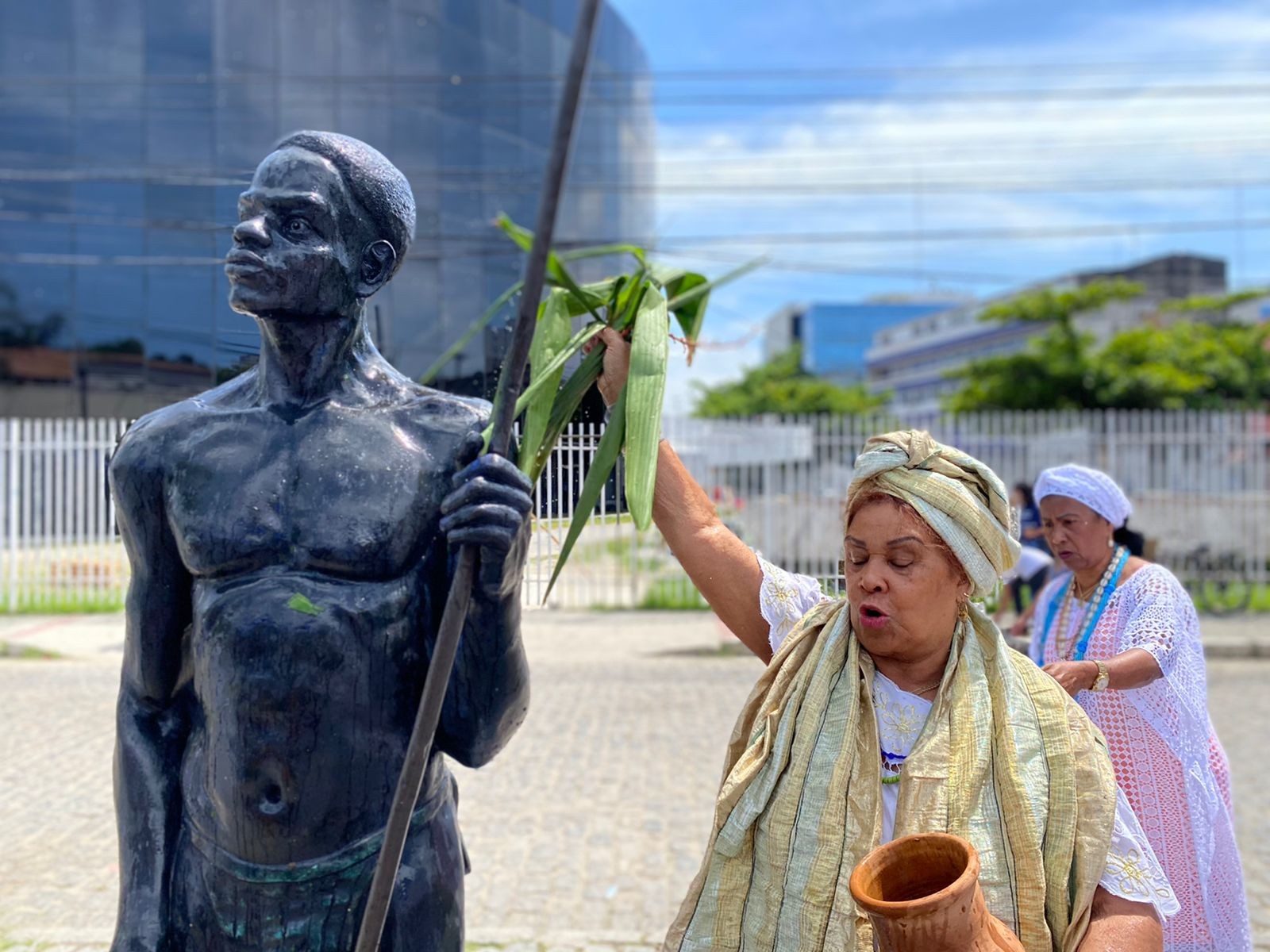What is the significance of November 20? Understanding Black Consciousness Day, a national holiday in Brazil
Celebration is linked to the death of Zumbi, leader of the Quilombo dos Palmares, in Serra da Barriga, now the state of Alagoas With the enactment of a presidential decree at the end of 2023 expanding the celebration of the National Day of Zumbi and Black Consciousness, already recognized by Law No. 12,519/2011, for the first time, November 20 will be a national holiday across Brazil. G20: Key points from the summit's final declaration Photos: Lula smiles with all leaders except Milei The date commemorates the death of Zumbi, leader of the Quilombo dos Palmares, located in Serra da Barriga, now the state of Alagoas. Captured and imprisoned, he was beheaded and his head was displayed in Praça do Carmo in 1695. The date has been celebrated by civil rights movements since the 1960s as a way to honor black culture and struggle. Previously, the date was recognized as a holiday only in certain states, such as Alagoas, Amazonas, Amapá, Mato Grosso, and Rio de Janeiro. It is also a municipal holiday in 1,260 Brazilian cities, including São Paulo. Since Brazil has 5,568 municipalities, Black Consciousness Day was, therefore, a holiday in only 29% of the country's cities. Who was Zumbi of Palmares? Historical records indicate that Zumbi of Palmares was born in 1655 in what is now the state of Alagoas, where he was baptized with the name Francisco. Historians are still debating whether the term 'Zumbi' was a name he later adopted or a title within the quilombos. Site in the region where Quilombo dos Palmares was founded in Alagoas Romildo Soares/Press Release At age 15, he moved to the Quilombo dos Palmares, then governed by his uncle, Ganga Zumba. Palmares was the largest quilombo in Latin America, with an estimated population of 20,000 black people who had escaped slavery, as well as native people and other fugitives. Interestingly, this massive quilombo was not a single settlement but a collection of small villages, the largest of which was the mocambo of Macaco. Palmares was the largest quilombo in Brazil, hosting up to 20,000 inhabitants simultaneously. It was larger than most Brazilian cities of the time when the country's population was about 300,000—excluding indigenous people. "Zumbi" (1927), painting by Antônio Parreiras (1860 - 1937) - Collection of the Antônio Parreiras Museum, in Niterói Antonio Parreiras The quilombo's main activity was collectivized agriculture, but there is evidence suggesting the existence of pottery, metallurgy workshops, livestock, and handicrafts. Slave owners in the region feared the size and prosperity of Palmares. Besides encouraging the escape of enslaved people, they believed the community could pose an existential threat if it decided to organize against the plantations. Therefore, in the second half of the 17th century, landowners began financing expeditions to attack and destroy the quilombo. All failed, but the cost in lives was immense. Ganga Zumba traveled to Recife in 1678 to negotiate an end to the violence with the governor, D. Pedro de Almeida. The proposal offered to the quilombo leader was controversial: those born in Palmares would be considered free, but all 'fugitives' would return to slavery. No one liked the idea. Day of Black Consciousness celebrated at Zumbi dos Palmares monument in downtown Rio Hermes de Paula The inhabitants of the mocambos did not want to surrender, and the landowners felt the treaty was too favorable to the quilombo. Enraged, Zumbi overthrew his uncle, who was eventually assassinated, likely by poisoning. The new leader fought against colonial forces for over 15 years, but in 1694, the mocambo of Macaco was attacked and destroyed by an expedition led by Domingos Jorge Velho and Vieira de Mello. Zumbi was injured in the battle and forced to flee. He evaded capture for a year until he was caught and killed in November 1695. The translation of this text into english was carried out by Project Irineu, O GLOBO's initiative to develop artificial intelligence tools. Here is the link to the original report.


Celebration is linked to the death of Zumbi, leader of the Quilombo dos Palmares, in Serra da Barriga, now the state of Alagoas With the enactment of a presidential decree at the end of 2023 expanding the celebration of the National Day of Zumbi and Black Consciousness, already recognized by Law No. 12,519/2011, for the first time, November 20 will be a national holiday across Brazil. G20: Key points from the summit's final declaration Photos: Lula smiles with all leaders except Milei The date commemorates the death of Zumbi, leader of the Quilombo dos Palmares, located in Serra da Barriga, now the state of Alagoas. Captured and imprisoned, he was beheaded and his head was displayed in Praça do Carmo in 1695. The date has been celebrated by civil rights movements since the 1960s as a way to honor black culture and struggle. Previously, the date was recognized as a holiday only in certain states, such as Alagoas, Amazonas, Amapá, Mato Grosso, and Rio de Janeiro. It is also a municipal holiday in 1,260 Brazilian cities, including São Paulo. Since Brazil has 5,568 municipalities, Black Consciousness Day was, therefore, a holiday in only 29% of the country's cities. Who was Zumbi of Palmares? Historical records indicate that Zumbi of Palmares was born in 1655 in what is now the state of Alagoas, where he was baptized with the name Francisco. Historians are still debating whether the term 'Zumbi' was a name he later adopted or a title within the quilombos. Site in the region where Quilombo dos Palmares was founded in Alagoas Romildo Soares/Press Release At age 15, he moved to the Quilombo dos Palmares, then governed by his uncle, Ganga Zumba. Palmares was the largest quilombo in Latin America, with an estimated population of 20,000 black people who had escaped slavery, as well as native people and other fugitives. Interestingly, this massive quilombo was not a single settlement but a collection of small villages, the largest of which was the mocambo of Macaco. Palmares was the largest quilombo in Brazil, hosting up to 20,000 inhabitants simultaneously. It was larger than most Brazilian cities of the time when the country's population was about 300,000—excluding indigenous people. "Zumbi" (1927), painting by Antônio Parreiras (1860 - 1937) - Collection of the Antônio Parreiras Museum, in Niterói Antonio Parreiras The quilombo's main activity was collectivized agriculture, but there is evidence suggesting the existence of pottery, metallurgy workshops, livestock, and handicrafts. Slave owners in the region feared the size and prosperity of Palmares. Besides encouraging the escape of enslaved people, they believed the community could pose an existential threat if it decided to organize against the plantations. Therefore, in the second half of the 17th century, landowners began financing expeditions to attack and destroy the quilombo. All failed, but the cost in lives was immense. Ganga Zumba traveled to Recife in 1678 to negotiate an end to the violence with the governor, D. Pedro de Almeida. The proposal offered to the quilombo leader was controversial: those born in Palmares would be considered free, but all 'fugitives' would return to slavery. No one liked the idea. Day of Black Consciousness celebrated at Zumbi dos Palmares monument in downtown Rio Hermes de Paula The inhabitants of the mocambos did not want to surrender, and the landowners felt the treaty was too favorable to the quilombo. Enraged, Zumbi overthrew his uncle, who was eventually assassinated, likely by poisoning. The new leader fought against colonial forces for over 15 years, but in 1694, the mocambo of Macaco was attacked and destroyed by an expedition led by Domingos Jorge Velho and Vieira de Mello. Zumbi was injured in the battle and forced to flee. He evaded capture for a year until he was caught and killed in November 1695. The translation of this text into english was carried out by Project Irineu, O GLOBO's initiative to develop artificial intelligence tools. Here is the link to the original report.
Qual é a sua reação?



































